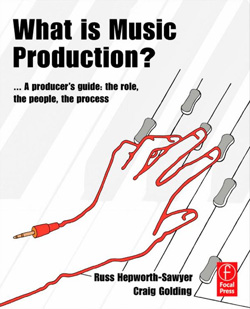Creative and Technical
As we know, different individuals bring a variety of different skills to the role of producer and certainly it is fair to say that some are more technical than others.
By this we mean that they have possibly come from an engineering based background and are therefore at home thinking in this way and dealing with technical or sonic issues and requirements.
So, generally speaking, the role of being both creative and technical within a session is only considered by those who fall into this category. The highly respected Hugh Padgham is a good example to use here. Padgham’s production credentials speak for themselves but it is interesting to see just how much work he has engineered and mixed over the years.
Having the skills and knowledge on the technical side of the fence can give a very different slant to the session. This is not to say that a producer with a technical background will be solely interested in which kind of mic is being used and what the compressor is set at, but simply that they will be more aware and involved in the conversations and decisions surrounding the technical requirements.
A recording engineer and assistant will be responsible for engineering the session and therefore much of the hands-on work will be undertaken by these people.
Naturally there will be a degree of overlap with a producer who possesses skills of a technical nature; however, their main concern and focus will still be on the musical performance aspects. Therefore we’re not necessarily talking mic choice here, but certainly mic positions for a certain sound or capture.
Do not be too quick to think that technical does not mean creative. As we all know, a compressor can be used purely to control dynamics or it can be used in a creative way to manipulate the tonal characteristics and emphasize transients or previously unheard nuances.
A purely musical producer may know how he wants the vocal melody to sound but would leave the recording or mix engineer to interpret his requirements, whereas a more technical producer would not only know this but also be able to make suggestions or give directions as to how the desired sound should be achieved.
In many ways the ability to be involved on the technical side of a production could be seen as an extra string to the bow. However, many producers would argue that they like to leave this to the engineers while they maintain a constant focus on the more musical and other aspects. Either way, having the ability to simply converse in technical terms can be a great help when working with your recording engineer in the middle of what might be a very creatively spontaneous session.




















